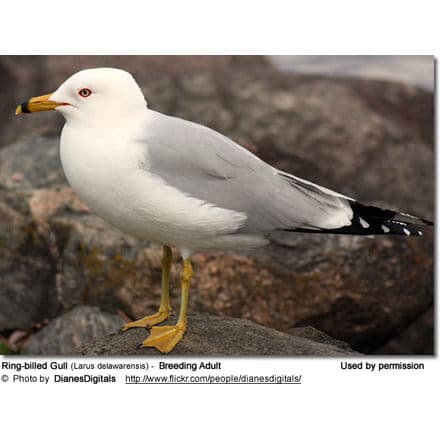Black-tailed Trainbearers
Black-tailed Trainbearers aka Long-tailed Sylphs (Lesbia victoriae)
Hummingbird Information
The Black-tailed Trainbearers (Lesbia victoriae) – also known as Long-tailed Sylphs – are South American hummingbirds found at high elevations east and west of the Andes in the countries of Colombia, Ecuado and Peru.
They inhabit subtropical or tropical moist montanes, high-altitude shrubland, as well as heavily degraded former forest.
Subspecies and Distribution:
-
- Lesbia victoriae victoriae (Bourcier and Mulsant, 1846) – Nominate Species
- Found in the Andes of northeastern Colombia (Norte de Santander to Bogotá); Andes of southern Colombia (Nariño) and Ecuador.
- Lesbia victoriae victoriae (Bourcier and Mulsant, 1846) – Nominate Species
- Lesbia victoriae juliae (Hartert, 1899)
- Found in the Andes of north and central Peru.
Lesbia victoriae berlepschi (Hellmayr, 1915)
- Found in the Andes of southeastern Peru
Alternate (Global) Names
Spanish: Colibrí Colilargo Mayor, Colibrí Coludo Morado, Cometa Colinegro … French: Colibri lesbie, Porte-traîne lesbie … Italian: Lesbia codanera, Paggetto codanera … German: Schwarzschwanzlesbia, Schwarzschwanz-Lesbia, Schwarzschwanzsylphe … Czech: Sylfa královnina … Danish: Sorthalet Slæbbærer … Estonian: mustsaba-händkoolibri … Finnish: Isolaahuskolibri … Japanese: midorifutaohachidori … Dutch: Zwartstaartkomeetkolibrie, Zwartstaart-komeetkolibrie … Norwegian: Svartslepkolibri … Polish: pazik czarnosterny … Russian: ???????????? ??????, ???????????? ???????-??????????? … Slovak: vleckochvost ciernochvostý … Swedish: Svartstjärtad släpsylf
Description
The male Black-tailed Trainbearer averages 18-25 cm (7-10 in) in length. The female is a little smaller – she is only about 13-15 cm (5-6 in) long.
However, most of this hummingbird’s length is comprised by its very long tail feathers.
Nesting / Breeding
Nests and eggs have been found in April and May; but the breeding season may extend to December.
Hummingbirds are solitary in all aspects of life other than breeding; and the male’s only involvement in the reproductive process is the actual mating with the female. They neither live nor migrate in flocks; and there is no pair bond for this species. Males court females by flying in a u-shaped pattern in front of them. He will separate from the female immediately after copulation. One male may mate with several females. In all likelihood, the female will also mate with several males. The males do not participate in choosing the nest location, building the nest or raising the chicks.
The female Black-tailed Trainbearer is responsible for building the nest out of dark-colored moss, roots and other plant fibers woven together. The cup-shape nest is covered with a thin roof of fern leaves and moss. The outside is covered with and green moss on the outside for camouflage in a protected location in a shrub, bush or tree. She lines the nest with rufous, soft, silky hairs taken from a mountain-fern. The structure of the nest is strengthened with spider webbing and other sticky material, giving it an elastic quality to allow it to stretch to double its size as the chicks grow and need more room. The nest is typically found on a low, skinny horizontal perch.
The average clutch consists of two small, white eggs, which she incubates alone with the tail doubled up,so that the tip of the tail is visible close to the head as she is looking out of the entrance hole. While she incubates, the male defends his territory and the flowers he feeds on. The young are born blind, immobile and without any down.
The female alone protects and feeds the chicks with regurgitated food (mostly partially-digested insects since nectar is an insufficient source of protein for the growing chicks). The female pushes the food down the chicks’ throats with her long bill directly into their stomachs.
As is the case with other hummingbird species, the chicks are brooded only the first week or two, and left alone even on cooler nights after about 12 days – probably due to the small nest size. The chicks leave the nest when they are about 20 days old.
Diet / Feeding
The Black-tailed Trainbearers primarily feed on nectar taken from a variety of brightly colored, scented small flowers of trees, herbs, shrubs and epiphytes. They favor flowers with the highest sugar content (often red-colored and tubular-shaped) and seek out, and aggressively protect, those areas containing flowers with high energy nectar. They use their long, extendible, straw-like tongues to retrieve the nectar while hovering with their tails cocked upward as they are licking at the nectar up to 13 times per second. Sometimes they may be seen hanging on the flower while feeding.
Many native and cultivated plants on whose flowers these birds feed heavily rely on them for pollination. The mostly tubular-shaped flowers actually exclude most bees and butterflies from feeding on them and, subsequently, from pollinating the plants.
They may also visit local hummingbird feeders for some sugar water, or drink out of bird baths or water fountains where they will either hover and sip water as it runs over the edge; or they will perch on the edge and drink – like all the other birds; however, they only remain still for a short moment.
They also take some small spiders and insects – important sources of protein particularly needed during the breeding season to ensure the proper development of their young. Insects are often caught in flight (hawking); snatched off leaves or branches, or are taken from spider webs. A nesting female can capture up to 2,000 insects a day.
Males establish feeding territories, where they aggressively chase away other males as well as large insects – such as bumblebees and hawk moths – that want to feed in their territory. They use aerial flights and intimidating displays to defend their territories.
Metabolism and Survival and Flight Adaptions – Amazing Facts
Species Research by Sibylle Johnson
Please Note: The articles or images on this page are the sole property of the authors or photographers. Please contact them directly with respect to any copyright or licensing questions. Thank you.






